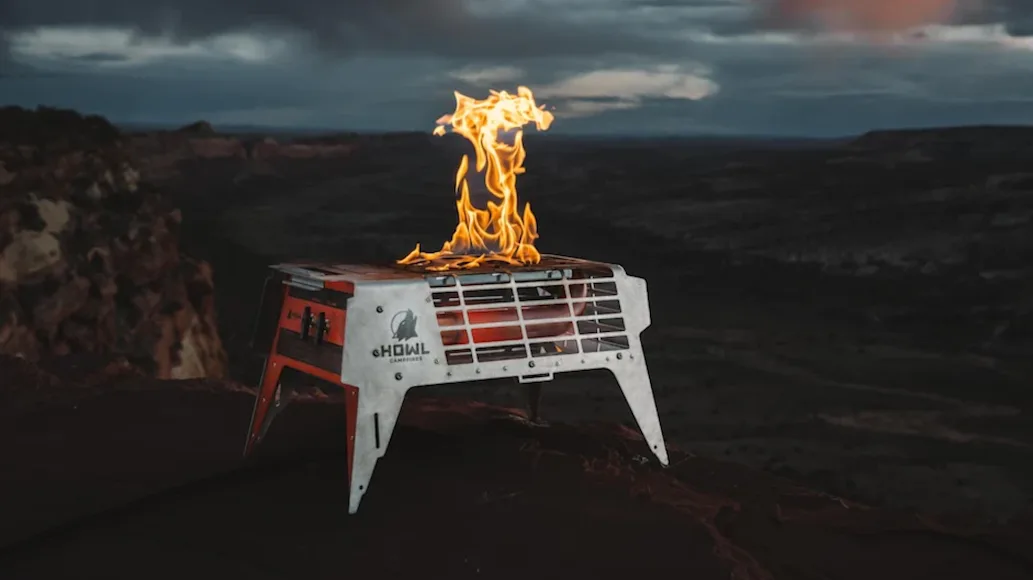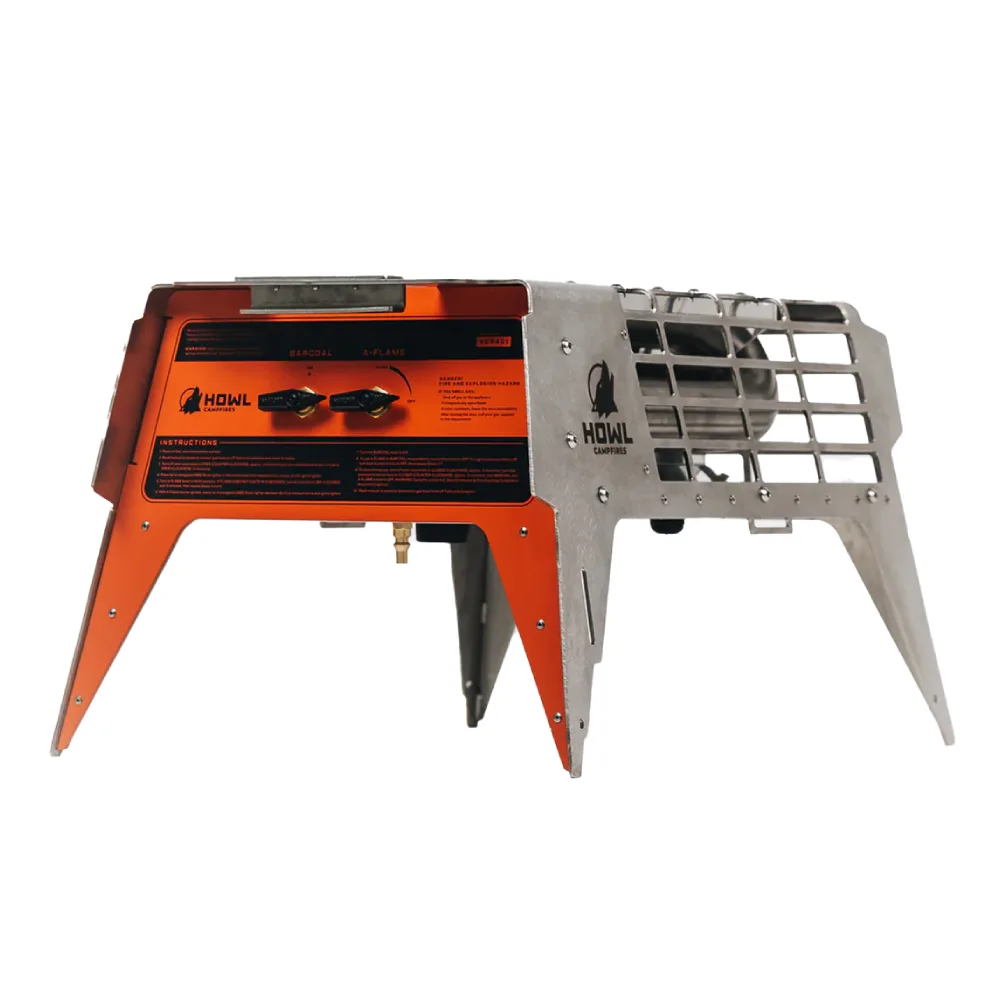We may earn revenue from the products available on this page and participate in affiliate programs. Learn more
A wood-burning fire pit—even a smokeless one—is all fine and dandy, until you encounter a wood-burning ban. Then? You're out of luck. Unless, that is, you were smart enough to snag one of the wood-free propane fire pits tht have popped up over the last few years, as wildfires rage in different parts of the United States and Canada. These run on gas and, most importantly, won’t accidentally spark the next great Yellowstone wildfire. However, they traditionally have issues with durability and radiating heat.
Those are problems the Howl Campfire was designed to fix. In fact, the high-end R4 claims to be the world's hottest propane fire pit. The only question is, does this expensive unit pit live up to all the hype? That’s what we set out to uncover. One thing we can say for certain after weeks of camping is that this definitely isn't your average fire pit.
Quick Overview
Specs
Weight: 34 pounds
Construction: 304 stainless steel, aircraft aluminum, brass
Temperature: 1,200+ degrees
BTUs: 61,800
Burn Time: 6.5 – 10 hours
Pros
Extremely well-made
Burns hot, even in windy conditions
Easy to use and set up
Doesn't throw sparks; reduces risk of wildfire
Made in the USA
Cons
Heavy and somewhat large
Expensive
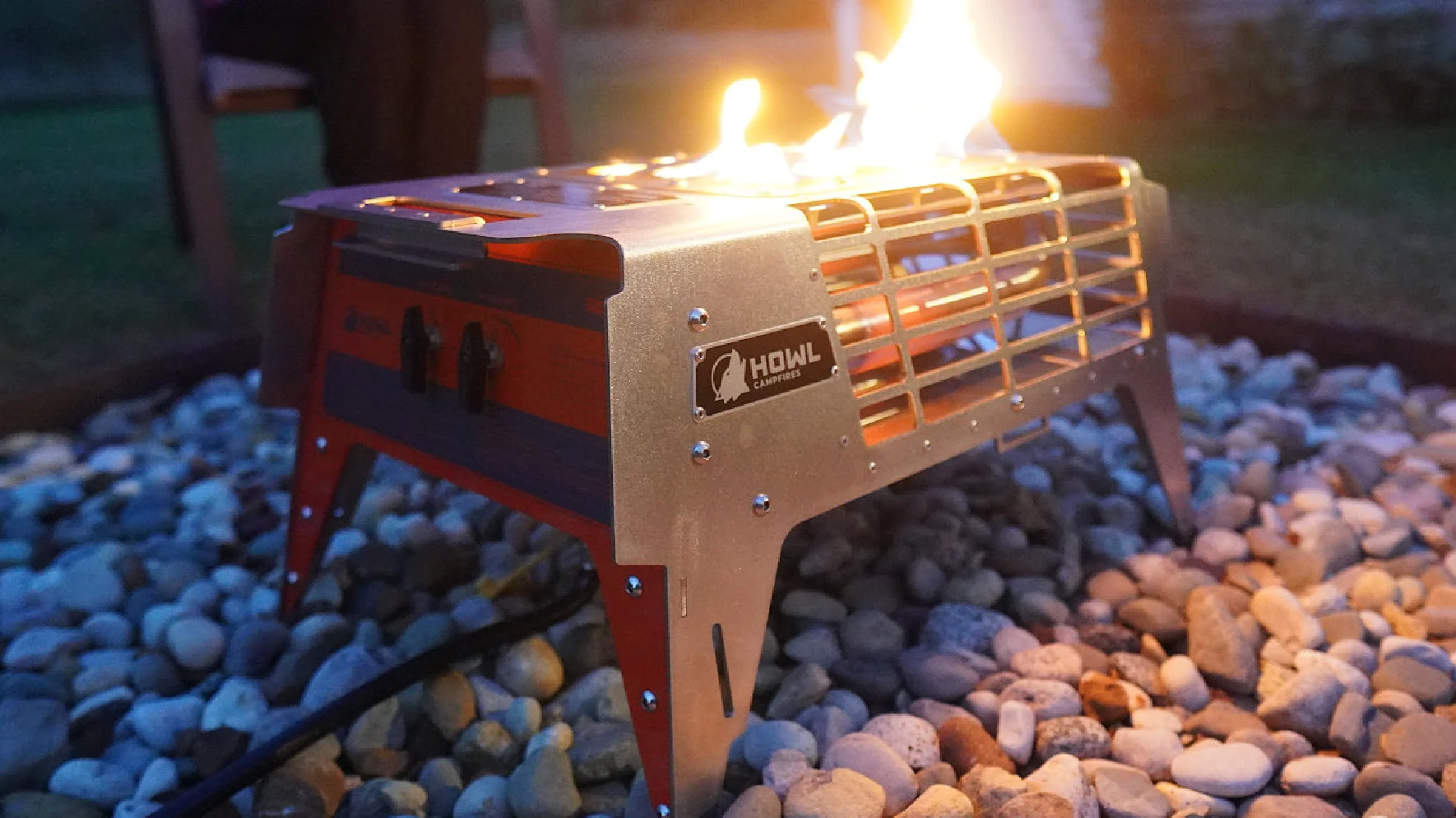
Testing Results and Analysis
Quality and Construction
When I opened the Howl R4 box, it became apparent that this wasn’t like other propane campfires I’ve used. The fire pit is constructed of metal, which Howl says is 304 stainless steel. This thing looks and feels like a tank. It’s heavy and solid, and the device has no weak point. I shook it several times before and after testing, and nothing moved or rattled inside. It feels like a throwback to a piece of camping equipment made 50 years earlier. Howl does all the cutting, welding, and folding in Colorado. The American-made craftsmanship shows. I had no worries about denting or scratching the pit.
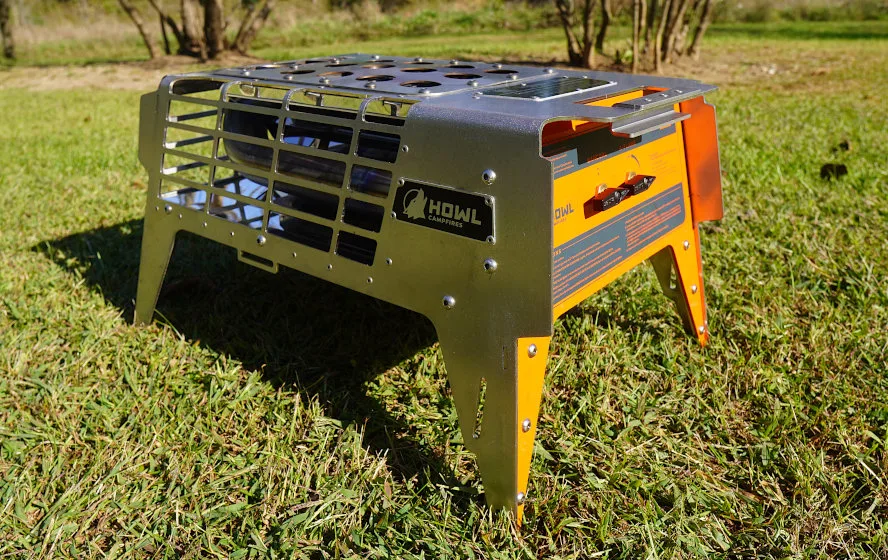
Weight
The Howl isn't light—it weighs 36 pounds. This isn’t something one can pack into the wilderness. It’s more of a car camping device. Even then, the footprint is too large for my tiny camper van conversion. That’s without also accounting for the propane tank. Even when the tank is strapped to the bottom, it takes up a lot of space. However, it will be of little concern for owners of RVs or trailers. This thing will easily stow in any large storage area.
Setup and Ease of Use
The hose connects to a standard-size propane tank, like one used with your average camping grill. Howl says it gets between 6.5 and 10 hours of burn time, depending on outside conditions. This pit emits heat through what Howl calls their “Barcoal” tech. It simulates the effect of hot coals in a wood fire by radiating heat through tubes in the pit's body. Reflectors within the body then deflect the warmth to anyone sitting around the fire. The entire setup is much more straightforward than it looks in pictures, and it was even easier to set up.
Hooking up the propane to the Howl and lighting it was also much easier than expected. The pit fires up instantly with a brilliant flame, and I was quite surprised to discover that it does literally “howl” upon startup. It’s a pitched whining sound that lasts about 20-30 seconds. I’m unsure what causes the sound, but the pit runs quietly afterward. There are only two control knobs, and both are self-explanatory, making it easy to operate.
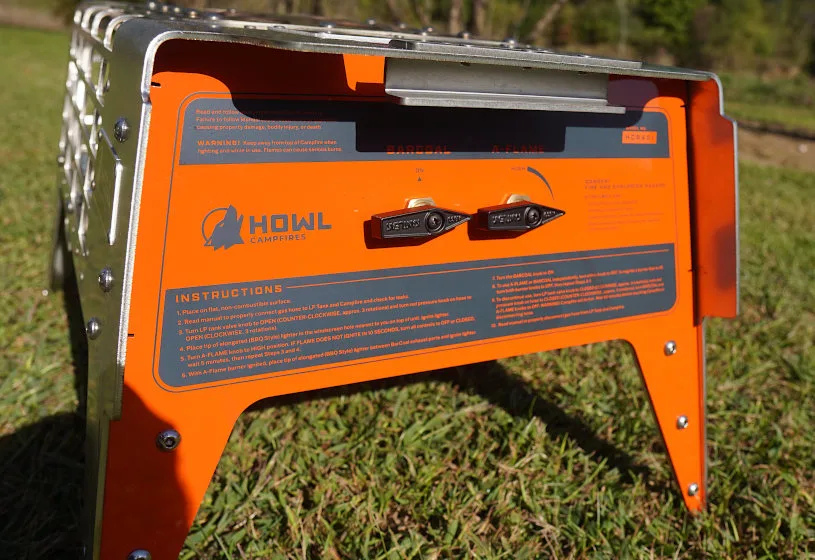
Fire Power and Burn
The Howl produces a brilliant, beautiful flame that creates a great ambiance. It’s nice not to worry about stoking the fire or adding more wood. It also produces heat just as advertised, although it takes about 20-30 minutes for the heat tubes to warm up enough to radiate. Still, this pit gives off much better heat than the other propane heaters I’ve tested in the past.
The last night of testing with the Howl was gusty, with winds of around 15 miles per hour. I wasn’t expecting the pit to perform well in those conditions, but Howl’s claims of handling wind are accurate. The flames sputtered several times but never went out completely. I feel confident that weather will never be a factor when using this pit.
Cleanup and Maintenance
After finishing each fire, I simply had to let it cool off, and it was back in storage in minutes. No messy ash or hot coals to dispose of. I purposely left this fire pit outside one night, and it got covered in dew. It didn’t affect the performance of the unit at all. The following day, it was easy to wipe it dry. Maintenance is genuinely one of the biggest advantages of this pit. There is none other than maybe wiping it down when it gets wet.
Versatility
This pit might have a somewhat niche audience. I suspect most of the interest is from those who frequently camp in high-risk burn areas like those in the western part of the U.S. It doesn’t throw any sparks, which makes it safe for places that would otherwise be a tinder box.
Ultimately, this pit is excellent for anyone frustrated with the quality of other propane fire pits. I test many outdoor products every year. With the Howl, I feel confident that this is one of the few that genuinely feels made to last a lifetime. The pit isn’t built for cooking food, but it is an acceptable trade-off, even if it’s for no other reason than ease of cleaning up afterward.
Price
We need to address the elephant in the room with this fire pit. It’s hard to get over the $1,299 price point, especially compared to other propane fire pits. Is it worth it? That’s going to be a matter of individual opinion. You’re essentially paying for this unit's higher-end materials and construction quality. The fact that these are cut, folded, and assembled here in the USA probably also adds to the costs.
Final Verdict
While the Howl is somewhat niche, I love that it's American-made, especially when so many products and jobs are being outsourced overseas. This is the pit for anyone looking for a long-lasting fire pit made in the USA. The quality of the craftsmanship is off the charts. It’s a nifty, clean-burning solution for areas where a traditional campfire isn’t possible. For those who can afford the high price point, it’s a pit that will hold up through years of use and abuse.
Why Trust Us
For more than 125 years, Field & Stream has been providing readers with honest and authentic coverage of outdoor gear. Our writers and editors eat, sleep, and breathe the outdoors, and that passion comes through in our product reviews. You can count on F&S to keep you up to date on the best new gear. And when we write about a product—whether it’s a bass lure or a backpack—we cover the good and the bad, so you know exactly what to expect before you decide to make a purchase.

